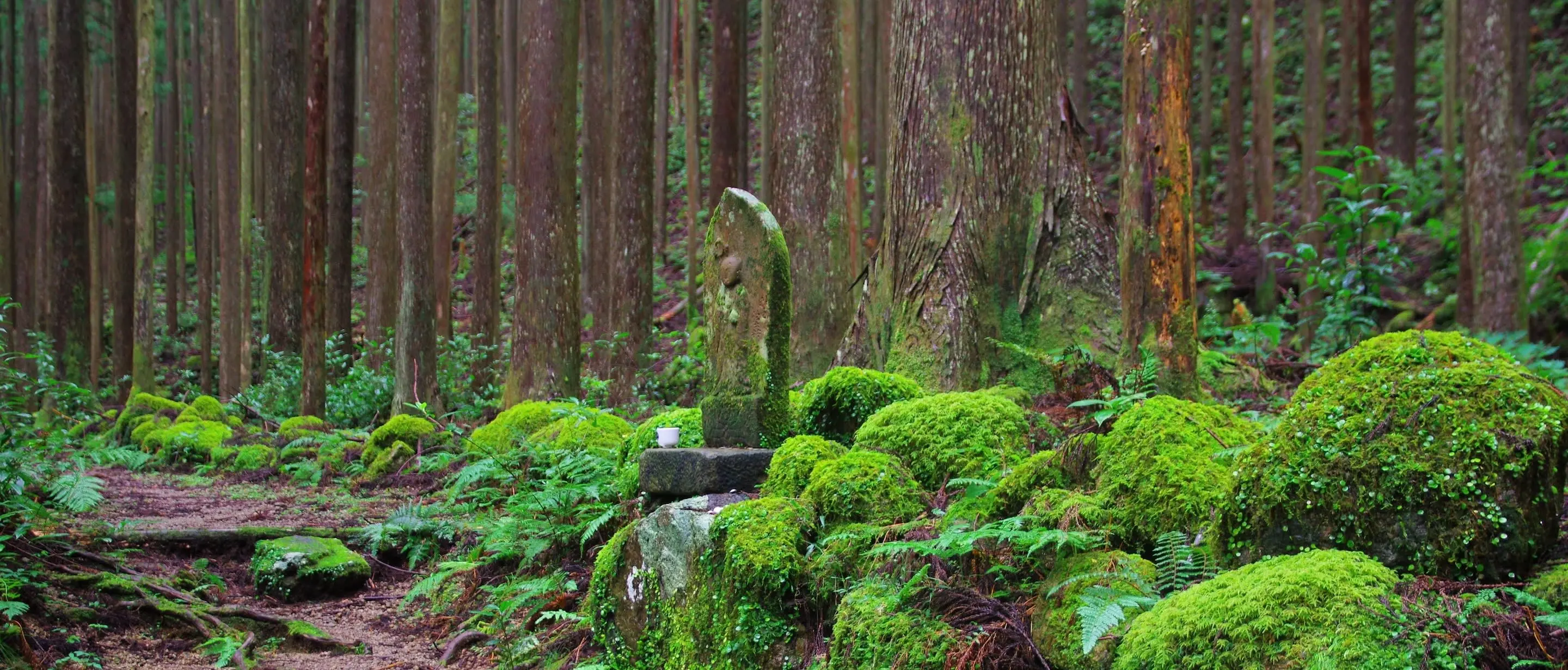

Japan boasts 25 sites on the UNESCO World Heritage List. Among them is the ancient and beautiful Kumano Kodō (熊野古道).


A series of pilgrimage trails that weave their way across the Kii Peninsula, the Kumano Kodō has attracted seekers and wanderers for centuries. Today, despite its remote location – 600 km from Tokyo and 200 km from Kyoto or Osaka – the Kumano Kodō still draws nature-loving travelers from all over the world to its intensely photogenic pathways.
The ‘Sacred Sites and Pilgrimage Routes of the Kii Mountain Range’ as it is also known, runs for 300 km and connects three sacred sites: Kumano Sanzan (home to three Shinto shrines), Mount Koya (an important Buddhist temple) and Yoshino Omine (an ancient training ground for Shingon-shu practitioners).


One of only two pilgrimage routes to be given world heritage status – the other being the Camino de Santiago in Spain and France – the Kumano Kodō wasn’t just selected for its stunning landscape. It’s its culture that truly sets it apart. For more than 1000 years, Shinto, Buddhism and Shugendo have peacefully co-existed here, perfectly showcasing the uniquely syncretic attitude to religion the Japanese people have.
When the Kumano Kodō was first added to the World Heritage list in 2004, the local Tanabe City Kumano Tourism Bureau took the opportunity to promote this mystical network of routes to the wider world. Their efforts were a major success. Unsurprisingly though, when Covid-19 shook the world in early 2020, the visitors stopped.


And while domestic tourists have started to return, most now prefer to skip the trails and visit the sacred sites by car or bus instead. This is partially because a lot of them are senior citizens who prefer the comfort and ease of a quick trip, and partially because many Japanese people aren’t able to take the necessary time off work.


Noriko Tada, the chair of Tanabe City Kumano Tourism Bureau said, “What makes pilgrimage routes like Kumano Kodō is the pilgrims. The routes would lose their value and die out without people walking on them.” So, it’s vital that travelers return to these ancient paths and experience everything they have to offer.
Situated on the west coast of the Kii Peninsula, Tanabe City is the gateway to the Nakahechi Imperial Route (中辺路), one of the most accessible and popular sections of the Kumano Kodō. The city relies on the business brought by visitors to the trail. So, in response to the challenges created by Covid-19, they launched Kumano Reborn, a revitalization initiative in collaboration with YAMAP, a major app developer that provides services for mountaineers.


In August 2021, Mizuho Sugawara, one of On Japan’s employees, joined Kumano Reborn. That was how On Japan got the opportunity to walk a section of the Nakahechi route between Takishiri Oji (滝尻王子) and Kumano Hongu Taisha (熊野本宮大社) with our guide, Sei Ouchi.
A travel writer who works with Kumano Reborn as a mentor, Sei is passionate about passing on all that he knows about the rich folklore and almost-forgotten myths surrounding the trails.
Once reserved solely for emperors, aristocrats and samurais, the Nakahechi Imperial Route is now open to all. So, at Sei’s recommendation, we trekked the 40 km between Takishiri Oji and Kumano Hongu Taisha over two days.


A beginner-friendly trail that features short ascents and downhills, it’s marked by handy numbered signposts or so and winds its way through towering trees and past thundering waterfalls.
As well as the signposts, amulet-like Oji (王子), or little shrines, have been built every few kilometers. Originally put up by locals so that pilgrims could pray for a safe journey, they serve as a reminder to take a break, sip some water and refresh your mind.


In modern Japanese, “Oji” literally means “prince”. However, in the Kumano-specific context, it refers to “child deities of both male and female”. Some are equipped with roofed rest houses and a few even have bus stops attached to them, making them the perfect place to start or stop a hike.
While Kumano Kodō was given world heritage status in part because of the way different religions coexist there, that’s not the end of its inclusivity. In Japanese society, until very recently, visitors were required to prove their “purity” before entering a sacred place. For example, women were not allowed into high-profile sacred places if they were menstruating or pregnant. Kumano, however, was and is very much open to everyone. There’s even a folktale from the 10th century about it.


Izumi Shikibu was a great poet in the mid-Heian era. She once embarked on a pilgrimage to Kumano Hongu Taisha from Kyoto. Less than 3 km from her destination, her period began unexpectedly. Thinking that her chance of worshiping the Kumano gods was lost forever, she dropped to the ground and read the following waka poem.
晴れやらぬ身のうき雲のたなびきて
月のさわりとなるぞ哀しき
Hare yaranu mino ukikumono tanabikite,
tsukino sawarito naruzo kanashiki
Translation: When I feel a little cloudy with floating clouds around, monthly annoyance comes and saddens me greatly.
That night, one of the Kumano gods appeared in Izumi’s dream as Buddha Amida and replied to Izumi.
もろともに塵にまじはる神なれば
月の障りもなにか苦しき
Morotomoni chirini majiwaru kami naraba,
tsukino sawarimo nanika kurushiki
Translation: Gods are dirt-bound just like humans: so no monthly annoyance would disturb us.
To put it simply, he told Izumi, “We are as impure as you are, so don’t worry, just come to our shrine and pray.” It has been said that the story was created by the disciples of Ippen Shōnin, a wandering preacher. Even if it is fictional, locals love this charming tale, and we were told it many times during our visit.
In part two of this series, we’ll explore the Nakahechi Imperial Route itself, starting with the 16 km between two of its most picturesque shrines, Takishiri-Oji and Chikatsuyu-Oji.